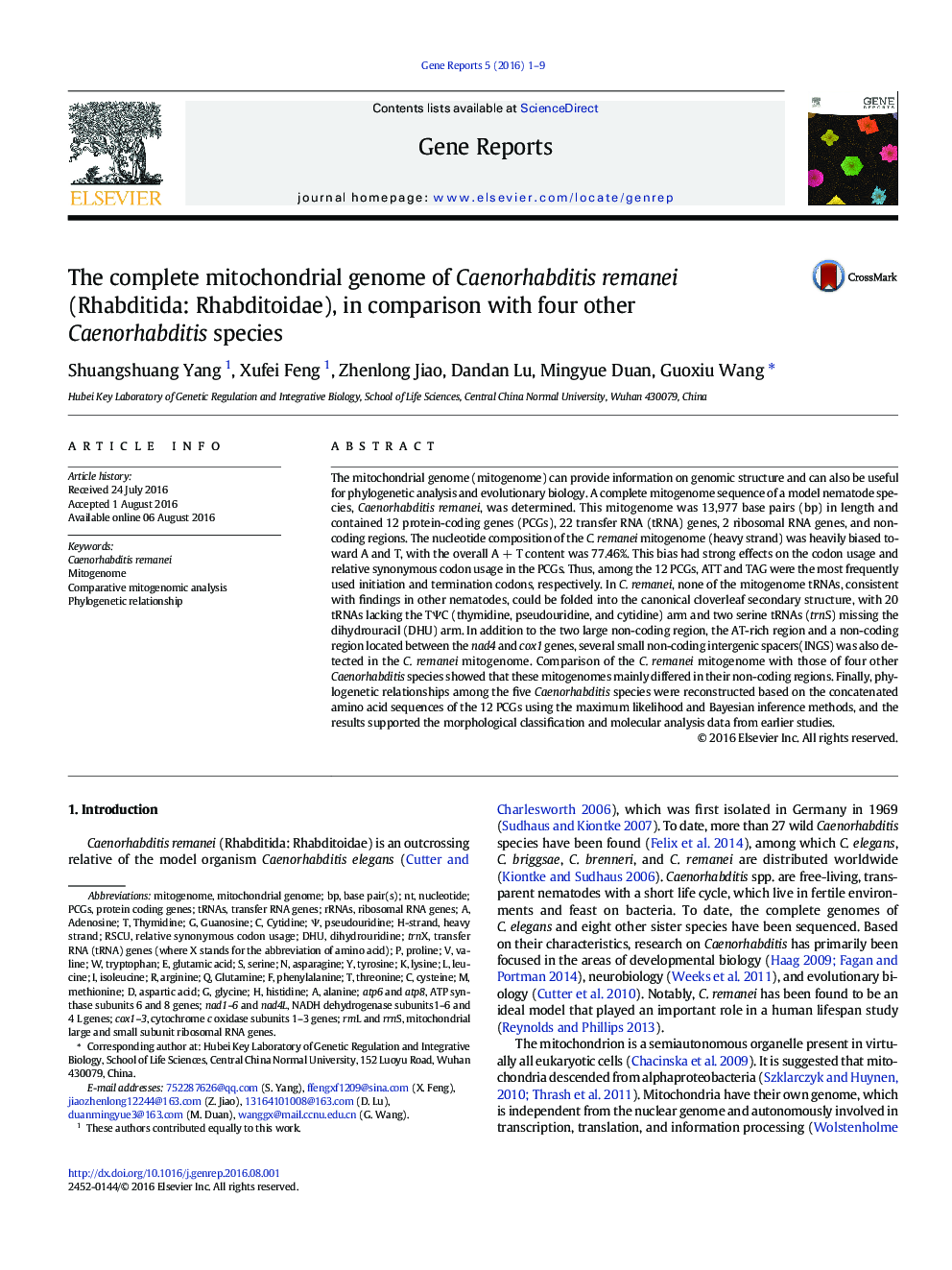| کد مقاله | کد نشریه | سال انتشار | مقاله انگلیسی | نسخه تمام متن |
|---|---|---|---|---|
| 2820459 | 1570079 | 2016 | 9 صفحه PDF | دانلود رایگان |

The mitochondrial genome (mitogenome) can provide information on genomic structure and can also be useful for phylogenetic analysis and evolutionary biology. A complete mitogenome sequence of a model nematode species, Caenorhabditis remanei, was determined. This mitogenome was 13,977 base pairs (bp) in length and contained 12 protein-coding genes (PCGs), 22 transfer RNA (tRNA) genes, 2 ribosomal RNA genes, and non-coding regions. The nucleotide composition of the C. remanei mitogenome (heavy strand) was heavily biased toward A and T, with the overall A + T content was 77.46%. This bias had strong effects on the codon usage and relative synonymous codon usage in the PCGs. Thus, among the 12 PCGs, ATT and TAG were the most frequently used initiation and termination codons, respectively. In C. remanei, none of the mitogenome tRNAs, consistent with findings in other nematodes, could be folded into the canonical cloverleaf secondary structure, with 20 tRNAs lacking the TΨC (thymidine, pseudouridine, and cytidine) arm and two serine tRNAs (trnS) missing the dihydrouracil (DHU) arm. In addition to the two large non-coding region, the AT-rich region and a non-coding region located between the nad4 and cox1 genes, several small non-coding intergenic spacers(INGS) was also detected in the C. remanei mitogenome. Comparison of the C. remanei mitogenome with those of four other Caenorhabditis species showed that these mitogenomes mainly differed in their non-coding regions. Finally, phylogenetic relationships among the five Caenorhabditis species were reconstructed based on the concatenated amino acid sequences of the 12 PCGs using the maximum likelihood and Bayesian inference methods, and the results supported the morphological classification and molecular analysis data from earlier studies.
Journal: Gene Reports - Volume 5, December 2016, Pages 1–9